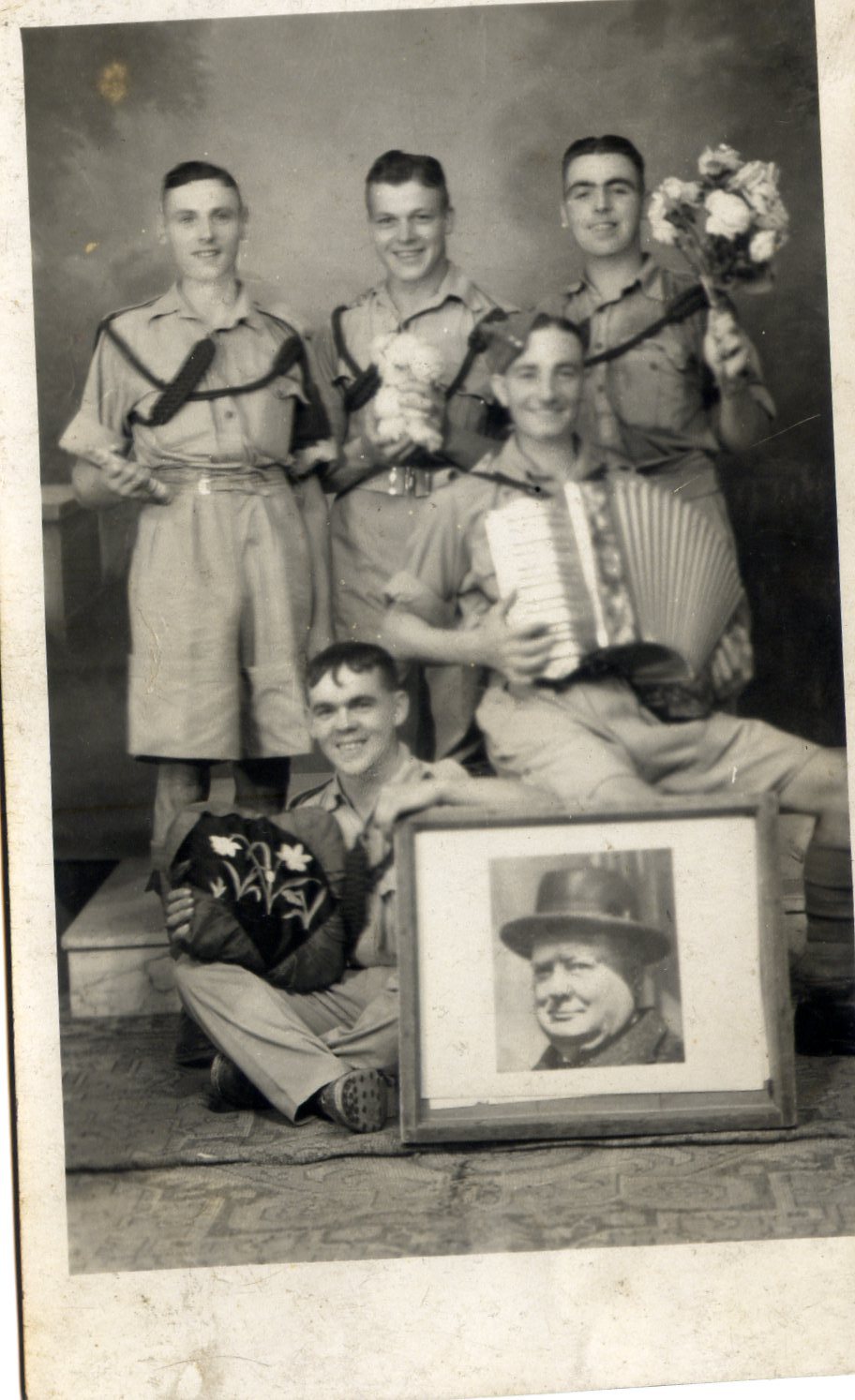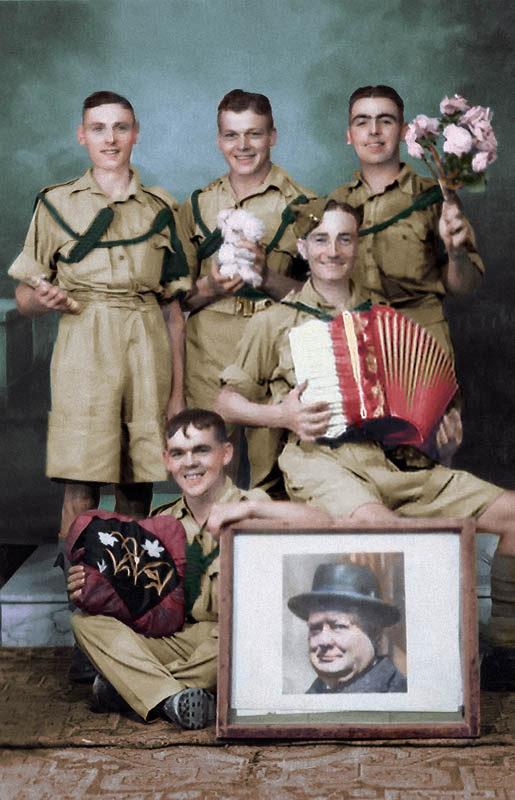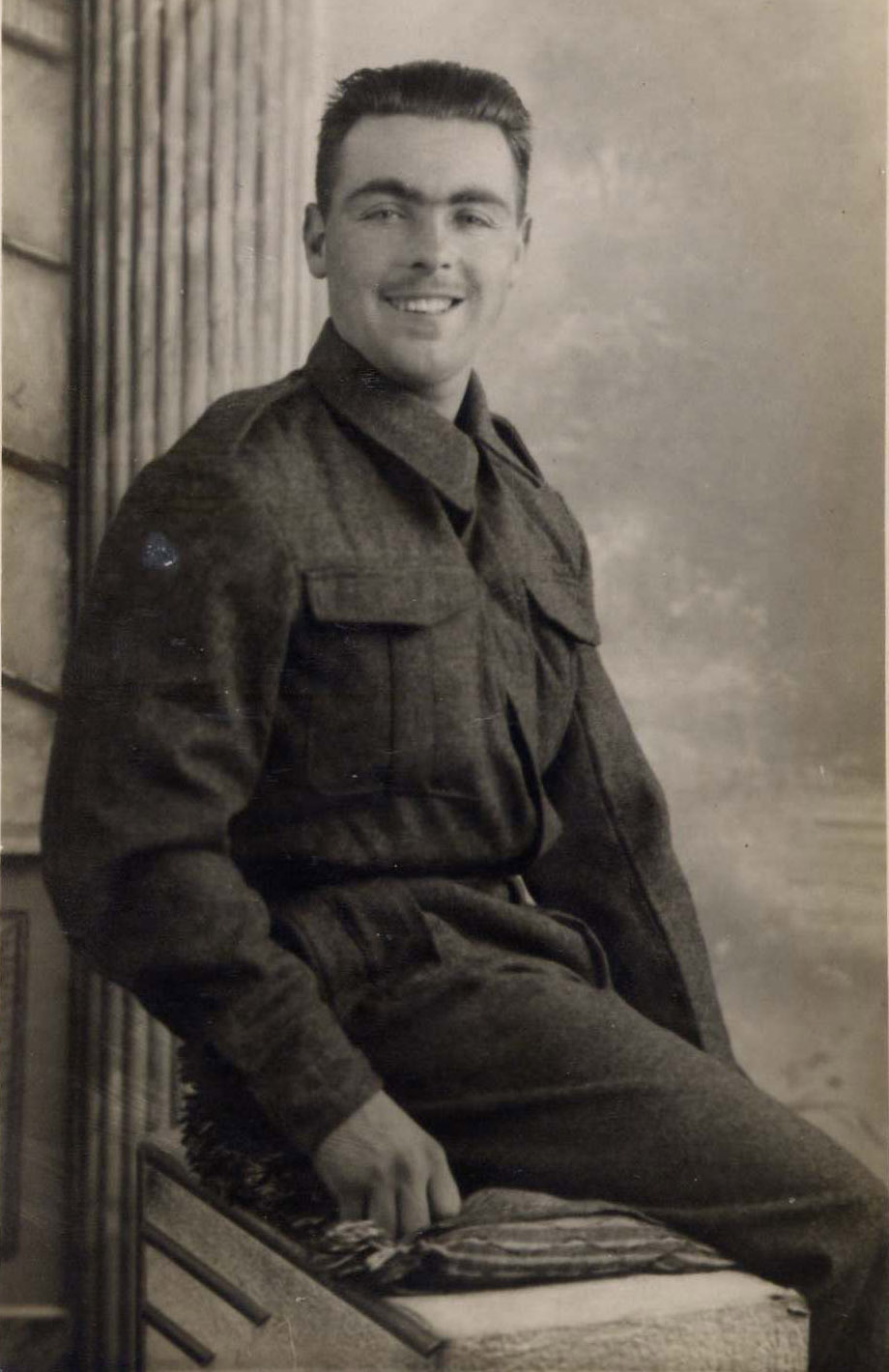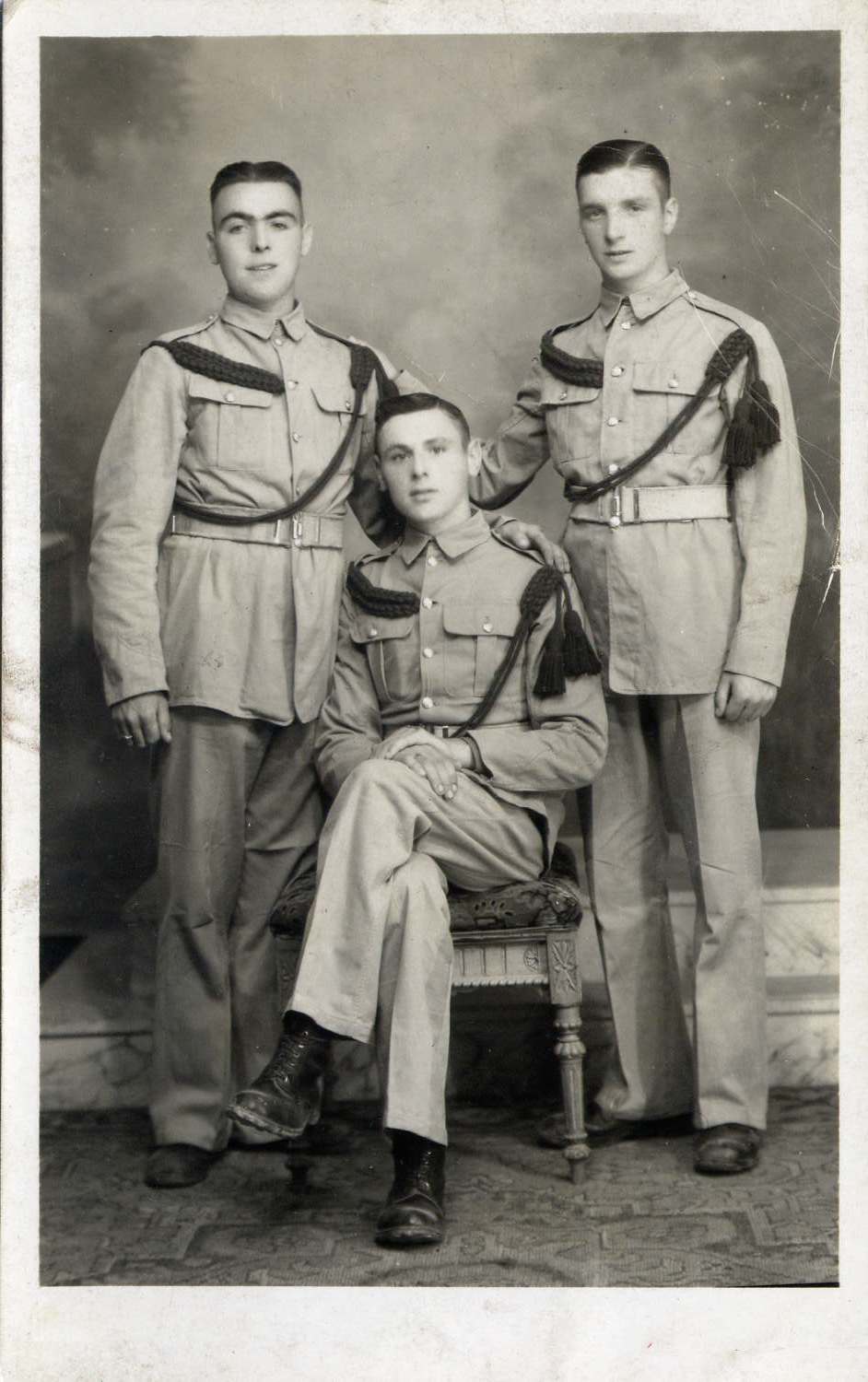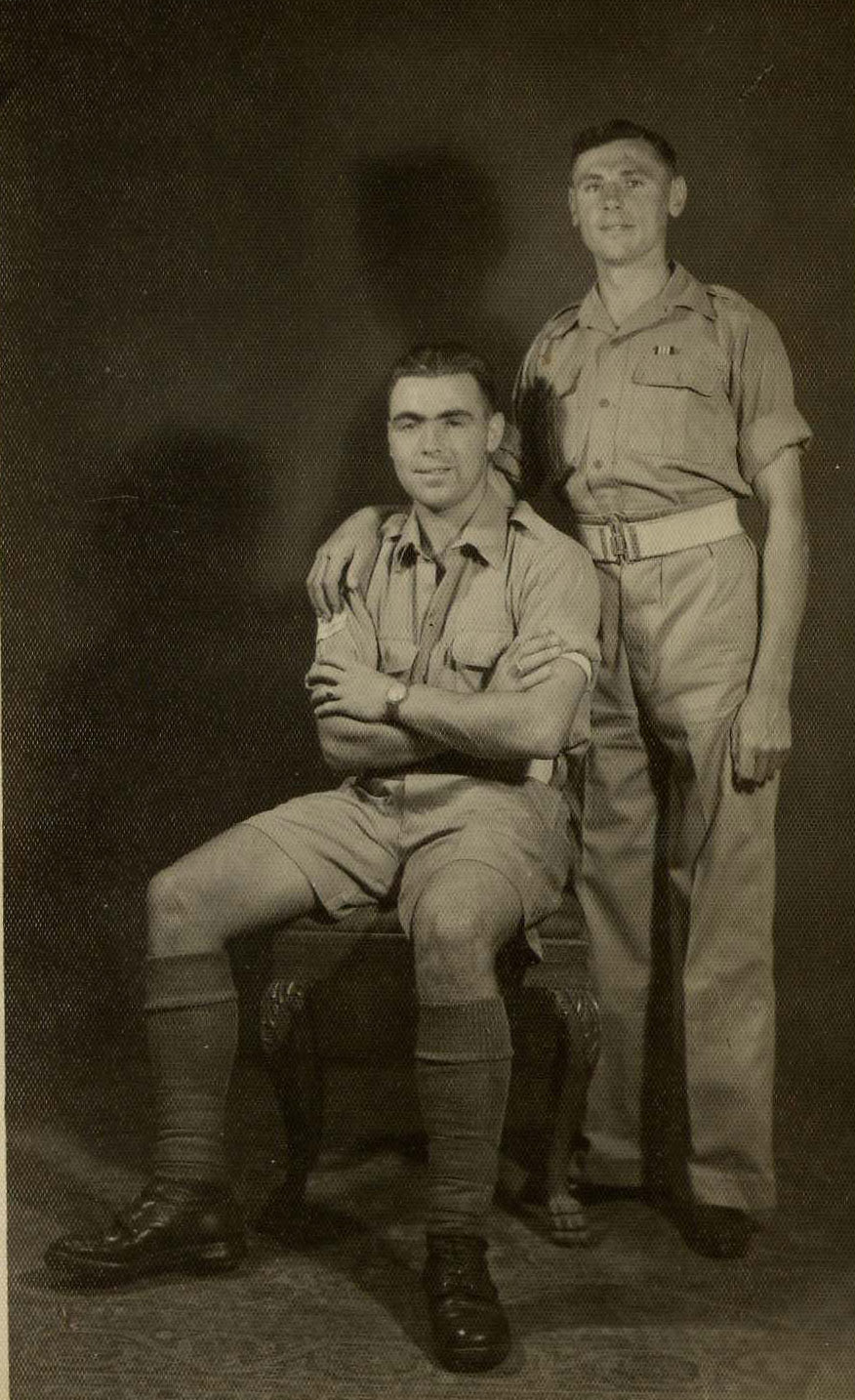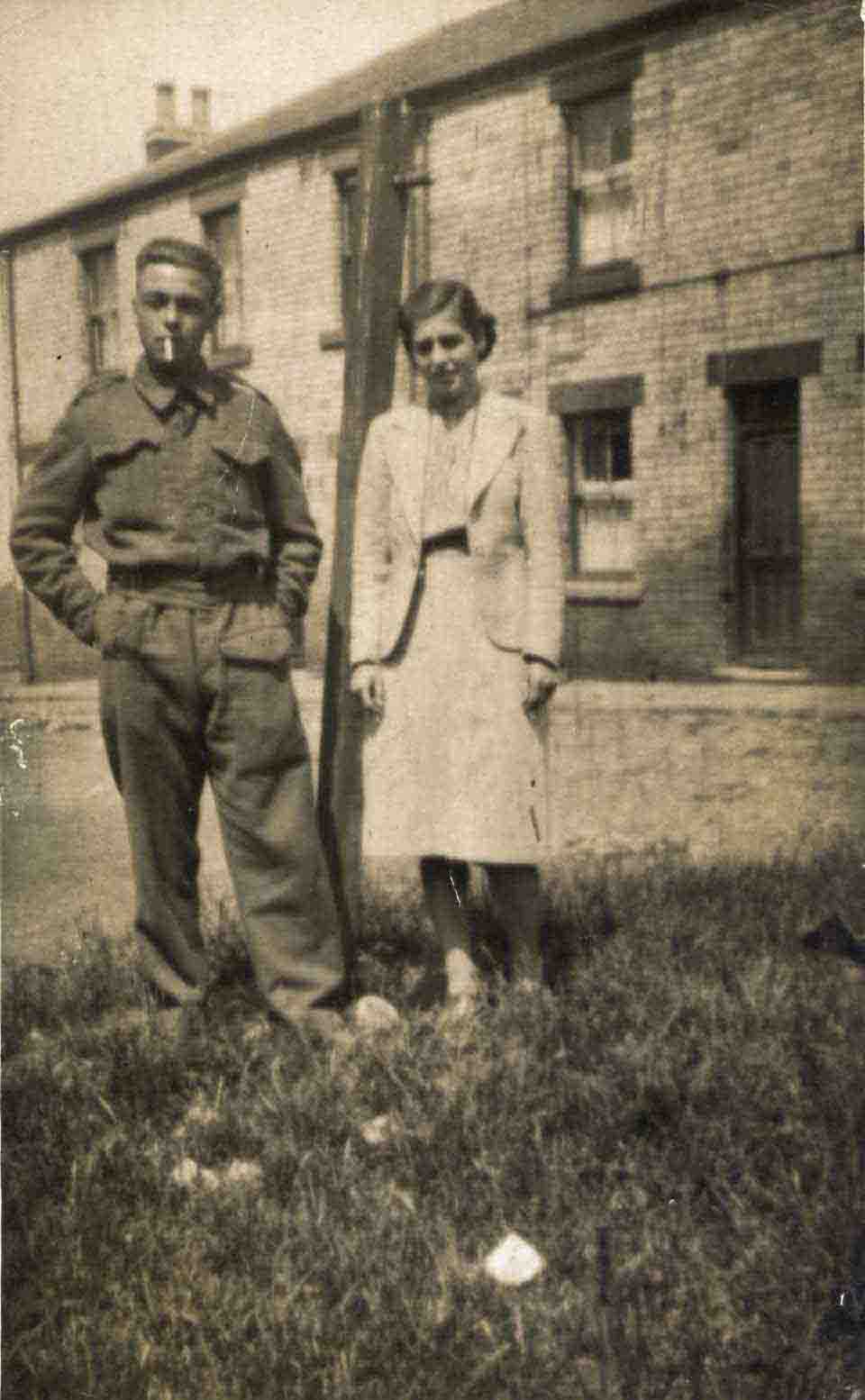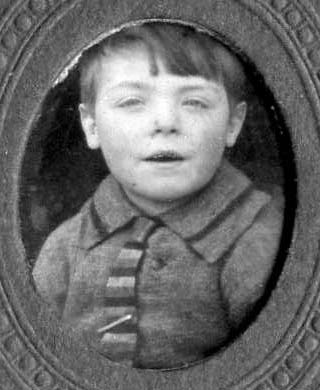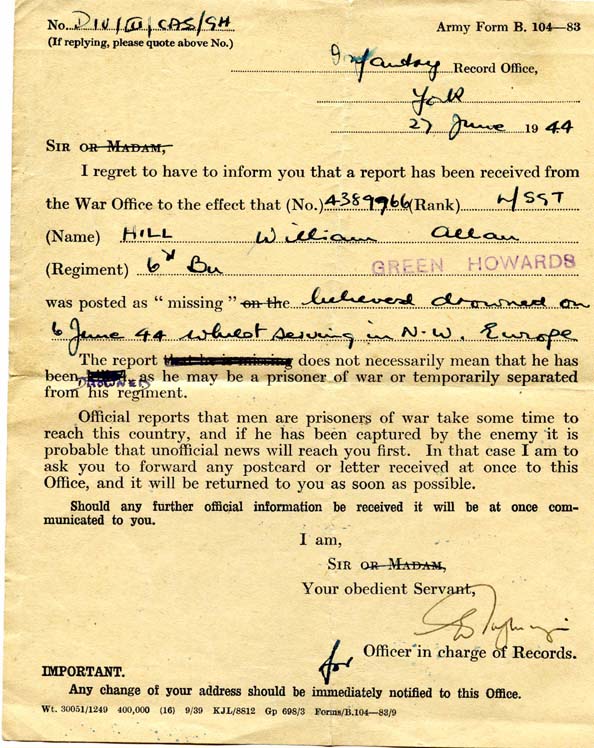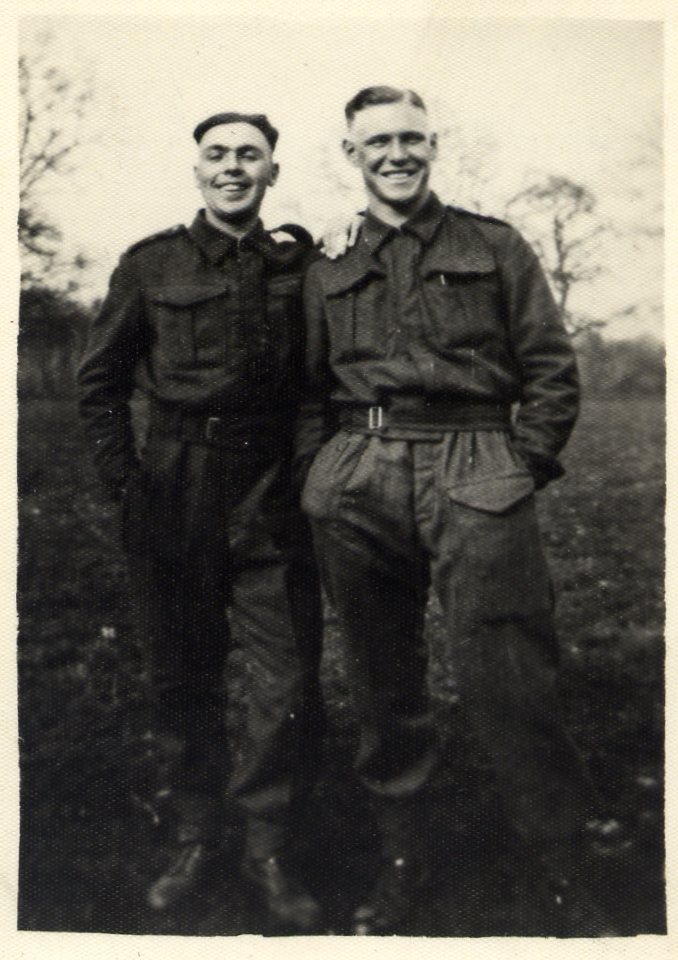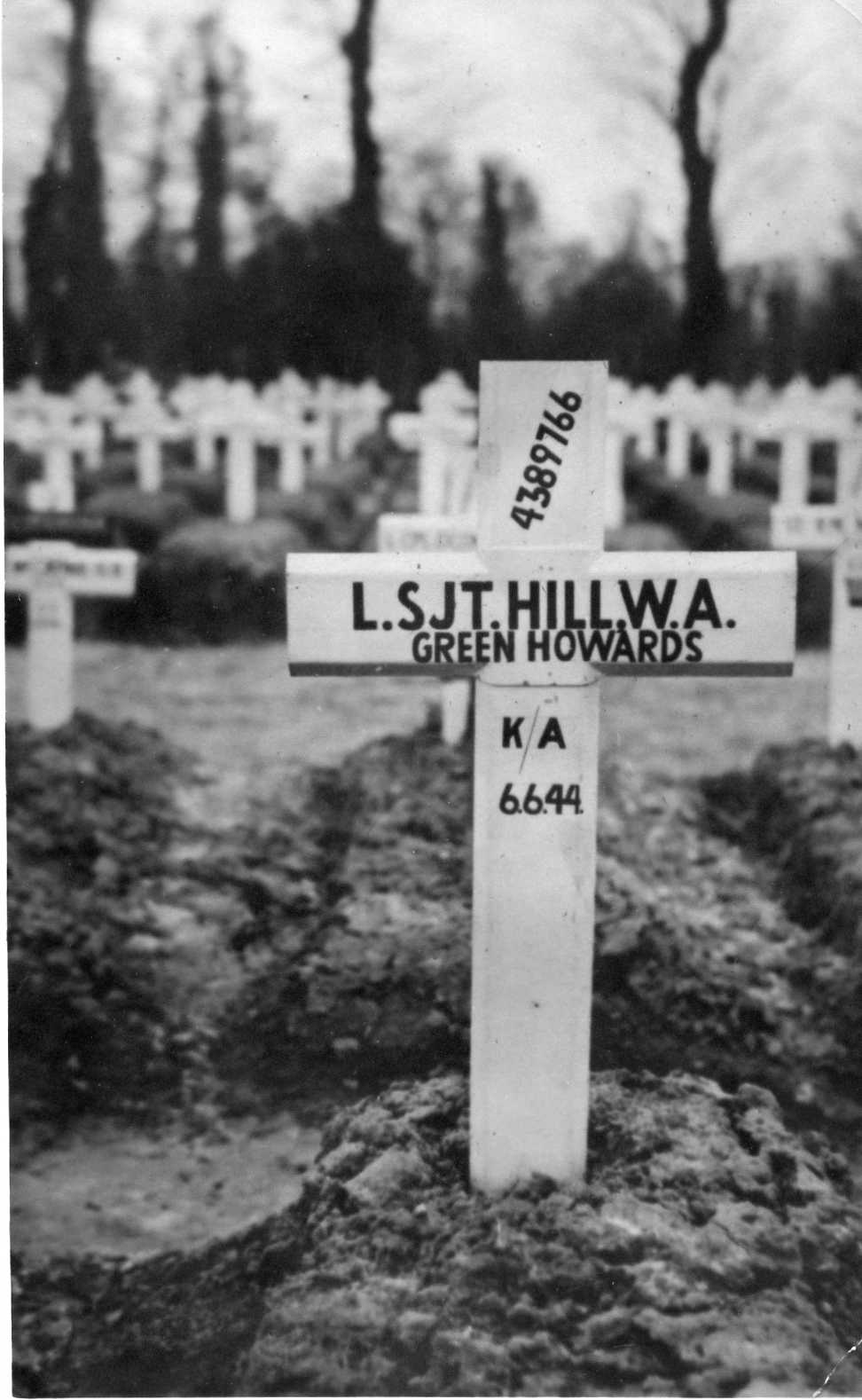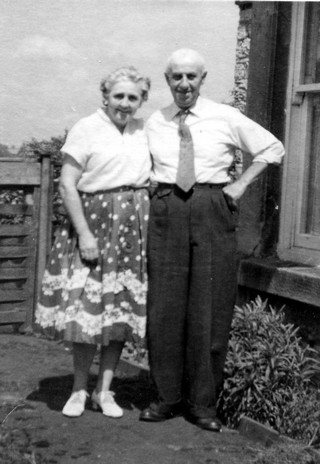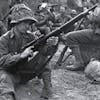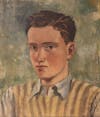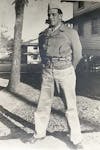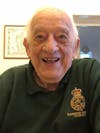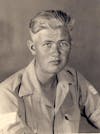25 Sgt Rufty Hill meets Winston Churchill in WWII
Tragic but poignant tale of five WWII comrades
Poignant tale of 5 brave WWII comrades. The story goes back to the start of the war, how these lads met, what special connection brought them together, and what tragedy was to befall some of them. Lance Sergeant William Allan 'Rufty' Hill and Bill Vickers are both honoured in this tragic but poignant tale.
More great unpublished history - of the Second World War.
Please take my MOBILE survey! I’d be grateful for any feedback on the Fighting Through Podcast, or even early comments on the survey itself. Replies are completely anonymous. Only 9 simple questions, so do please take a shufty! https://form.jotform.com/202945895781067.
Link to feedback/reviews Thank you.
Below: Bill Vickers back left and Sgt Allan (Rufty) Hill back right.

Below: An early photo of the band, Rufty marked and Bill third from right - note the leather drum aprons - so Bill was a drummer aswell, not a trumpet player as I suggest in the show!

Below: Bill Vickers - "All the best in the world from Bill to Rufty"

GPS co-ordinates for Bray Dunes, France and other places of interest:
A few GPS coordinates for French battlegrounds – validated by me personally
Bray Dunes - 51.04.36.47N 2.30.26.18.E
Gold Beach - 49.20.42.92N 0.31.41.11.W
Arromanches 49.20.20.9N. 0.37.13.38W
Crepon. 49.18.56.4N. 0.33.00.2W
Lion d'or hotel, Bayeux. 49.16.34.11N. 0.41.54.5W - Just great - it's where the German officers stayed during the war.
Marefontaine battery. 49.19.23.5N. 0.31.48.21W
Hinges communal Cemetery - rue de bethune GPS 50.33.40.2N 2.37.18.4E
Longueness (ST. OMER) souvenir cemetery (John Hewson buried here) - 50.43.56.38N, 2.15.04.28E
Mont Fleury gun battery 40.20.29.3N. 0.30.58.26W
Merville battery. 49.16.12.0N. 0.11.46.58W
Pegasus bridge, Ranville 49.14.32.6N. 0.16.27.2W
Longues sur mer gun battery 49.20.35.2N. 0.41.31.4W
Demi Lune hotel, Ypres - recommended 50.51.17.7N. 2.53.11.4E
Somme Thiepval monument 50.03.09.34N, 2.41.17.8.E
A WW2 history podcast on Bill Cheall's war diary and memoirs.
Interested in Bill Cheall's book? Link here for more information.
Fighting Through from Dunkirk to Hamburg, hardback, paperback and Kindle etc.
Below - the original photo and then the results after various improvements. Back row left is Bill Vickers, back right is Rufty Hill. We don't know the names of the others
1940, June - Rufty after Dunkirk in 1940
Rufty and Bill with Bill Elliot m (front) Oct 1941. This would have been taken in Limassol not long before they sailed to Palestine and Iraq. I can't see Bill Vickers in the other pics.
Highland Div cemetery at Wadi Akarit 1943. WWII podcast
Allan and Bill Vickers 1943, May 28 - after Wadi Akarit but before sailing to invade Sicily in July
Allan and sister Freda, Mike Smith's mother
Young Allan Hill March 1927 - aged 5
Record Office letter advising Rufty missing
Lance Sergeant Rufty Hill - Drowned under a landing craft on Gold beach, D-Day.
'He would have given a very good account of himself had he lived to go into the assault. He was a great scrapper and a good, tough soldier. It was a very sad loss to us all as he had always been a young man so full of energy, well known in the battalion and very popular with everybody; nothing was too much trouble for him - he was ‘one of the lads’ - Bill Cheall
Allan Hill was killed tragically during the D-Day landings at Normandy, on Gold Beach, whilst getting off the landing craft. As he jumped off, he landed in a shell hole and at the same time a wave caused the boat to surge forward on top of him to crush and drown him.
Dad referred to him as Rufty and said he was a good scrapper and that he would have given a good account of himself if he had survived. The above photo was kindly provided by Mike Smith, Rufty's nephew.
Mike wrote in to say:
"I was looking for information about Allan Hill and came across your pages. My name is Mike Smith, and I am the son of Freda Smith (nee Hill) who was Allan's sister. Freda died on the 8th September 2010. I was born in 1954, so did not know Allan, but there was a photograph of him on mother's windowsill.
Allan lived at Coral Street, Lingdale (Near Redcar) and had several brothers and a sister, Freda, who was my mother. Aubrey is the last remaining sibling. Norman, another brother, had a daughter Maureen."
Bill Vickers was a best pal of Rufty's and in a poignant comment, Mike added:
"I've not met Bill Vickers, but he was a name spoken about when I was a boy. I understand that he went back to look for Rufty after the landings on D-Day, but could not find him."
Allan and an unknown pal, taken at Marsden Hall, May 1941. "To Freda with love from Allan"
Allan's original grave in Tunisia but relocated to Bayeux France.
Bill and Ida Hill, Allan's parents, c 1959
FT Episode 25 – Sgt Rufty Hill meets Winston! A world war two special.
Hear how Sgt Rufty Hill meets Winston Churchill. It’s another photo story, and today’s picture shows Rufty Hill, one of Dad’s comrades, clowning about with friends in a photo booth in Limassol Cyprus in 1941. And they’ve got an unexpected guest.
The tale goes back to the start of the war, how these lads met and what special connection brought them together. We’ll hear some of the riveting actions these lads fought in, one of whom won the military medal.
Sadly, tragedy was to befall some of them.
….
Hello again.
I’m Paul Cheall, son of Bill Cheall, whose WWII memoirs have been published by Pen and Sword – in FTFDTH. The aim of these podcasts is to give you the stories behind the story. You’ll hear first-hand memoirs and memories of veterans connected to Dad’s war in some way – and much more.
For your listening convenience, there are lots of links to apps at the website. And once you’re listening with an App you’ll normally get a notification when a new episode is out. So if you’re a new listener and want to make things easier for yourself, go to the www.fightingthroughpodcast.co.uk web site, and click on one of the many links you can use to listen to the show.
Today, I’m continuing my series of photo stories. They’re based on either my Dad’s memoir, or on photographs or other memoirs I’ve been sent. You won’t need to be looking at the photo whilst you’re listening.
Just a bit of feedback to share with you now: Many thanks to Crow who posted some very nice comments on Podbean. “Love the WW2 podcast, I feel like I’m deep in it with them all, thank you”
And in Apple Podcasts by Nicolas Richo from UK :
“A great personal perspective which leaves me in awe of what it must have been like for these gents. I hope to visit the Normandy beaches next summer or year after that, I’m amazed at these men”.
And I’ve got one or two more bits of feedback:
Many thanks to kind comments and five star ratings from Sultanofswat30 and MauaLuGa from USA,
And a rather concerning comment, really From Jon1028 from UK
Jon said
Perfect WW2 ear fodder
“It’s midnight, can’t sleep & this came up on a search on iTunes. Could be a long night I fear as I’m hooked from the first few minutes” – not healthy Jon!
Jon added that if I’m ever in the UK West country, to get in touch, he volunteers at Upottery & Dunkeswell Airfields in Devon and would gladly offer me a day’s touring around their museums and aerodromes.
I’ve just been looking up RAF Upottery in Wikipedia and I’ve just stumbled upon this.
“RAF Upottery is a former World War II airfield in East Devon, England.
Opened in 1944, it was used by the Royal Air Force, United States Army Air Forces and United States Navy. During the war it was used primarily as a transport airfield and for antisubmarine patrols.
Upottery received much attention in 2001 when it appeared in the first episode of the television mini-series Band of Brothers.
It was from Upottery that Easy Company of the 506th Parachute Infantry Regiment, U.S.101st Airborne Division boarded Douglas C-47 transports and made their first combat jump into Normandy on 6 June 1944.
Well, listener, that gets my first “HOW GOOD IS THAT?!” award for 2018. Wow.
Listener, I so want to get on with the show now but I’ve got a bumper crop of extra material and PS’s at the end
There’s a “My relative was in the war and he said” contribution from Tom Collins
And there’s a couple of great post-scripts you don’t want to miss -
so stay with me and don’t switch off till the music starts!
The original WW2 photograph of Rufty and Pals was in black and white. I got it enhanced a few years ago and I’ve recently had it colourised by specialist Marina Amaral, just for this show! If you’re a connoisseur, it’s not a high quality image, but I’ve done my best to enhance it and for me it’s all about the quality of the story that goes with it.
The photo features Rufty Hill and some pals messing about in a photo studio in Limassol, Cyprus, around June 1941. We only know the names of two of the lads in this photo – there’s Rufty himself back right and his best pal Bill Vickers back left. Does anyone listening know who the other lads were?
They’re dressed in WW2 Khaki with huge great baggy trousers rolled up to their knees.
There’s a passage in Dad’s book where he describes these very shorts when he gets to Egypt in 1942:
“The weather now was very hot. Very quickly, we dumped our kit in a tent allocated
to us and went to another tent where we were issued with khaki drill shirts and
shorts to wear in a place of our denims. If you could have seen those shorts, well,
they were good for a laugh but they were cool in the scorching sun; they had a
double buckle fastening at the waist and wide legs which reached almost to our
knees, they must have been kept in stock since the Indian campaigns!
Back to the photo listener: They’re all sporting wide grins and each of them is holding something daft, a bunch of flowers or a flute, an accordion and a toy dog.
And there’s a photo of Winston Churchill on the floor in front of them. One of the great things about this photo is how the lads are happy to have Winston in the photo with them – I have to say I can’t think of any other world leader of today that’d be entertained so willingly.
The cynic in me wonders if the photo studio also had a photo of Adolf Hitler in a back room just in case any German soldiers also walked in off the street some day! I know when Dad was stationed in Brugge, in Belgium, 1945, just after he’d recovered from his Normandy injuries, he said in his memoirs,
“Photographers were on the streets doing brisk business among servicemen, making capital out of the fact that friendly forces had arrived in their midst.
They were probably just as enthusiastic when the enemy were amongst them – after all, business is business – but I’ll wager they fleeced the unsuspecting Germans.” Listener, I don’t think the enemy ever arrived at Limassol, but if they did then no doubt the tradesmen would’ve welcomed them!
I just love this scene and that’s why I had it colourised. I know some people frown upon colourisation as – like - a sort of sacrilege to the art of old photography. But for me if it’s a special photo for some reason, then making it look as if the action just happened yesterday makes it all the more fascinating.
Far more than with black and white photos – and when I see a great picture in colour – I just marvel at it, I think you see detail you don’t notice in black and white, like hair colour, badges, clothing, allsorts.
There’s a bit of mystery over the photograph which I’d like to share with you now. When I was researching the colours I have to thank the WW2Talk.com forum for their help with some of the shades, but the only real and very strange sticking point was some sort of straps or webbing which adorned the soldiers’ shoulders which took me ages to sort out.
I initially thought it was unidentified equipment, then maybe just decoration slung over their bodies by the studio for fun. I had to leave it a while so I could focus on other aspects.
But then on the last lap of my investigation I took a look through the other photos sent to me by Rufty’s nephew, Mike Smith – and there are some beauties – Rufty was a real pin up for the girls I’d imagine, such a good looking lad.
But I was looking for clues to the names of the other soldiers then suddenly, wham, it hit me – right between the eyes.
Staring out at me from my computer screen was a photo of a bunch of lads in a military band, wearing that same strange webbing! And of course Rufty himself was in that picture! And it was identical to the other stuff. That put me on the right track and I soon found out that the regalia is tasselled aiguilletes.
I had to make a judgement call on the colour which just had to be green – Green Howards infantry regiment of course! Now I know the answer to all this, it’s fairly obvious but when the photo was in black and white it was hard to see what the things were!
But the instrument of choice was clear in that earlier picture, because the lads are standing in front of a big pile of drums! And Rufty and one other are both wearing leather aprons over their left thighs.
I can just imagine Rufty and his pals belting out some marching rhythm and the troop, in my Dad’s words, stepping it out to them.
I remember in Dad’s memoir he was once on a really long and tiring route march and towards the end of it the army band turned up and played them all back into camp and Dad remarked upon how it lifted them all. How good is that?!
I notice Bill’s holding a flute in the main photo so I just wonder if he played a trumpet in the band?!
Anyway, all of this means these lads had a bond with each other not just from being comrades, but from being in the Green Howards regimental band. I would imagine they even had a connection through music before the war too! They must have taken their instruments with them to Limassol cos surely they wouldn’t have taken the aiguillettes unless they’d taken the instruments.
Anyway, all these photos are in the show notes at www.fightingthroughpodcast.co.uk and there are some real crackers! I don’t think I’ve ever come across such a fine set of photos of a bunch of war comrades. There’s one of Rufty sitting in front of Bill and my goodness what a man mountain Rufty looks. And Bill has such a caring hand on Rufty’s shoulder. Do take a quick look through the show notes. These photos are great and you will not see them on any other web site – so remember – you saw it and heard it on the FT Podcast first!
OK – over to the stories behind the photo!
Limassol is in Cyprus and in 1941 it was a defensive outpost that Britain was holding in anticipation of an enemy advance which never happened. The 50th division was there in the early stages of the war to build defensive works and anyone who has listened to Wilf Shaw in episode 4 will have heard about how Wilf lost his gold ring, a 21st birthday present, whilst digging at Limassol.
According to a book The Deceivers: Allied Military Deception in the Second World War, in June 1941 Cyprus contained about 4,000 troops which in fact were elements of the 50th (Northumbrian) Infantry Division, plus some local troops. They were designated as the fictitious 7th Division. These and other ruses, part of the "Cyprus Defense Plan", convinced the enemy they were facing up to 30,000 troops.
In mid-July 1941 the rest of the 50th Infantry Division arrived. To keep up the deception, the genuine 50th Division and the fake 7th Division made up the 18th Corps
In November 1941 the 50th was relieved by the 5th Infantry Division (India) so Rufty and pals with Wilf Shaw and his pals all moved on to Palestine and then Iraq for a few months.
So, although the war was going on at this point, and the troops were on a war footing, there wasn’t actually any fighting being done, so I guess there were times when the soldiers were given leave to visit the town, hence the photograph.
Here’s Rufty’s story
His full designation is Lance Sergeant William Allan Hill, his nickname was Rufty, perhaps because he was a good scrapper, as my Dad described him.
Mike Smith, Rufty's nephew wrote in to me to say:
"My name is Mike Smith, and I’m the son of Freda Smith who was Allan's sister. Freda died in 2010. I was born in 1954, so didn’t know Allan, but there was a photograph of him on mother's windowsill.
Allan lived at Lingdale (Near Redcar) and had several brothers and a sister. Listener these are now all passed away, but there are descendants such as Mike himself and a cousin Maureen.
Dad mentions Rufty several times in his memoir. He was killed tragically during the D-Day landings at Normandy, on Gold Beach, whilst getting off the landing craft. As he was jumping off, he landed in a shell hole and at the same time a wave caused the boat to surge forward on top of him to crush and drown him.
Dad said he would have given a good account of himself if he’d survived. And in his book he said “It was awful to think that Rufty had survived Dunkirk and from Alamein to Tunisia then through Sicily, only to be killed in such a tragic way.”
Mike said "I never met Bill Vickers, but he was a name spoken about when I was a boy. I understand that he went back to look for Rufty after the landings on D-Day, but could not find him."
Listener, remember these lads were in a band and fighting together. No wonder Bill Vickers went back to look for Rufty on the beaches. I can’t begin to imagine the emotions he was experiencing when his pal went missing. I can picture the route off Gold beach cos I’ve been there.
They would have walked off the sand past a tram shelter that Hollis had shot up thinking it was a pill box. Up the road alongside a landmark house with a circular drive, past some gun emplacements at Merville, all this just a few hundred yards up the road. I just wonder how far Bill got before he turned back. Would he have got permission from his officer, or from Sgt Major Stan Hollis VC? Would he have just said sod it and absconded?
I don’t know, but what a tragic scene it must have been. I think in reality Bill would only have been a few yards off the beach before he checked back for Rufty because they’d been told not to stop to help each other and there would have been too much else to do. Certainly, going back would have been fraught with danger because it’s likely the beaches would still have been under shell fire from the gun batteries until Stan Hollis VC played his brave part in silencing them.
I went to Rufty’s grave last year at Bayeux War cemetery in France and paid my respects. I made a short video of it so if you’d like to see it take a look in the show notes. There are a few other videos I’ve taken too of Gold Beach and other scenes, so take a quick shufty!
Rufty is recorded as being killed on 6 June, 1944, D-Day, aged 22. The inscription on his grave is
I'VE ANCHORED MY SOUL IN THE HAVEN OF REST
IN JESUS I'M SAFE EVERMORE
I can’t think of a better tribute to Rufty than the one Dad paid him in his book –
“Rufty would have given a very good account of himself had he lived to go into the assault. He was a great scrapper and a good, tough soldier. It was a very sad loss to us all as he had always been a young man so full of energy, well known in the battalion and very popular with everybody; nothing was too much trouble for him - he was ‘one of the lads’
Bill Vickers’ story
OK over to Bill Vickers who was Rufty’s best mate. This first hand account is taken from Bill Vickers, speaking to author Barrie Barnes, who has written a book called Operation Scipio. It’s is all about the battle of Wadi Akarit on 6 March 1943. It’s a fabulous book and there’s a link to it in the show notes along with some great photos of Rufty that his nephew Mike sent in.
There’s actually a section on Dad in it – he was interviewed by Barrie years ago. But this episode isn’t about Dad, it’s about Rufty and his pals, who would all have been on first name terms with Stan Hollis VC, who distinguished himself on D-Day. What an incestuous show this is becoming!
Sorry I just had to pause to contemplate for a moment. I just wonder what these veterans would make of all these stories coming out which connect them after all these years, if they were still alive today. It’s almost becoming a British Band of Brothers!
And I’m in total awe of Barrie Barnes being able to interview all these veterans those many years ago and it makes me feel kind of humble. I’ve interviewed just two veterans for this show and that has been a privilege, but he’s interviewed scores and still he’s producing books based on many years of research – he’s got another one coming out in 2018 called the 50th at Bay – The years of defeat, which is a history of the 50th Division 1939-42 when the British army was on its back foot.
And I think anyone reading that might just gain an insight into the source of the brave resolve shown by the 50th Div to jump off those landing craft and get up the beach on D-Day, to avenge their fallen pals. I’ve put a link in the show notes for anyone interested in Barrie’s book or any other books I’ve mentioned.
So, Bill Vickers and Wadi Akarit, which is in Tunisia, North Africa … Dad was in this wwii battle and so were Wilf Shaw and Brian Moss. Episode 2 gives you more background and first-hand accounts of this brutal battle. But essentially the troops had to walk across a flat plain under heavy shelling then take a small hill, point 85, before crossing an anti-tank ditch to access the hills where most of the enemy were waiting.
Here’s Bill Vickers’ story:
17 PLATOON, D COY, The 6th Green Howards
We got along the top of the Wadi, a dried-up river bed, and our platoon was well forward. Our section was led by Sgt William Allan Hill who was my best mate: Rufty was his nick name. We came onto a German Spandau machine gun post and took all the crew prisoner in their slit trench. They were all Africa Corps men and one of the lads took them back the way we had come, the rest of us got into the slit trench.
Below us in the Wadi was a piece of high ground that could best be described as an island. On it was a 50mm Anti Aircraft gun and an anti tank gun: we opened fire on the crews with the captured German machine gun and my bren gun, killing or wounding both crews.
The ww2 anti tank gun had a clear view of the entrance to the Wadi and, I believe, it was this gun that was responsible for the two knocked out tanks standing motionless at the entrance. On one, an officer was hanging out of the turret with his entrails blown out, his sergeant was dead on his hands and knees being killed by blast.
Someone on the island fired at us and I was hit on the left front of my steel helmet by a tracer bullet which dented my helmet. While we were in the slit trench a couple of vehicles came up to the island with ammunition for the guns and they were unaware we had got so far into the Wadi. We took the drivers prisoner and our men drove the vehicles out!
Our section opened fire on the island to give covering fire to our mates as they went into more covered slit trenches taking more prisoners. From our position we could see the 5lst Highland Division on the slopes of the high ground to our right — the enemy started to shell and mortar them and they took cover. Our fighter bombers roared over us and strafed and bombed the enemy on the open ground beyond the Wadi. At the same time, 25 pounder shells from our own artillery were flying over us and landing on the open ground.
Our ‘D’ Company moved forward and out of the protection of the Wadi - the enemy must have been waiting for us to come into view as we were shelled, mortared and machine gunned constantly. There were plenty of slit trenches to take cover in, but not before we had taken numerous casualties.
The men I saw hit were CSM Jim Oliver MM — he was an old regular soldier who had served in India with our 2nd Battalion before the war; the company runner who was a reinforcement from Devon, and a lad from the signal platoon
When there was a lull in the fighting, we buried them where they had been killed.
Listener, that’s the end of the passage, just one element of the bigger battle but such actions were being similarly played out right across the battle front as brave men did what had been asked of them.
Apparently, the battle of Wadi Akarit was one of the most successful fought by the Eighth Army, with the enemy defences broken through in 24 hours. Although allied casualties were high with several hundred dead or wounded, there were also several medals won.
Dad wrote a good conclusion to this battle in his book:
“We now rested, guards posted forward, and it was soon dark. Then we slept where we were, on the ground, our heads on our packs. This sad day was over and it was said that the battle of Wadi Akarit was one of the most successful fought by the Eighth Army.
Our company commander won the MC.”
Military Medal, WW2
There’s a little prelude to all this, because amazingly, only three weeks earlier, Bill Vickers had won the Military Medal during further fighting during an associated battle of Mareth and here’s the description of the action that led to it, taken from Synge, Story of the Green Howards: There’s a link in the show notes
“Pte F W Vickers, a No. l bren gunner, of B Company, behaved with great gallantry and was awarded the Military Medal. Most of his section had been wounded by a mortar bomb, and the enemy fire was intense.
Pte Vickers, on his own initiative, worked his way around the flank of a strong machine-gun post, and charged it by himself, killing or wounding most of the crew and capturing one prisoner.
By this action, the remainder of his platoon were enabled to capture the position. His courage and dash proved a great inspiration to his comrades.”
Listener, so that’s just another example of the breed of lad who was fighting this war for us – prepared to put their own lives in danger in order to help his comrades.
There’s a very poignant PS about all this coming up at the end of the show so try to stay listening to the end.
So, that’s the end of the story telling –
I now want to share with you an email I’ve had which fits nicely into the “My relative was in the war” category:
It says:
Hi Paul,
I just want to say how much I’m enjoying your podcasts. They’re such an insight into the history of our old heroes! I’ve just listened to the rear gunner episode from the Lancaster boys, what a job that was!
My own grandad was in ww2 serving with the Royal Engineers and he saw service at El Alamein and Italy, among others, and was also awarded a DSM for taking an allied tank back from behind enemy lines that the Germans had previously taken.
Grandad was Albert Nichol, a Geordie, but everyone called him Nick. He drove the big six wheelers - called Scammels.
Like many others, he didn’t particularly enjoy talking about what he’d seen. It wasn’t until my grandparents had both passed that I’d learn he’d lost a lot of friends. He himself ended up as a flight engineer at Boscombe Down airfield in Wiltshire until he retired.
Anyhow I just wanted to drop you a line - keep up the good work!
Yours sincerely,
Tom Collins
Tom thanks so much for this contribution. Man I would just love to learn more about your grandad’s DSM exploits in recovering that tank from behind enemy lines. There must be a citation somewhere with more details so if you, listener can shed any more light on this please do get in touch. There’s a free copy of Dad’s book to the first person who can produce a copy of the citation. That’s Albert Nichol of the Royal Engineers.
Next episode
The Zilken letters – next podcast, ww2
I’m not going to tell you what these are, you’ll have to listen to the show to find out. But I promise you won’t be disappointed. There are going to be some great revelations about the second world war. If they were known today the press would be all over it!
For security reasons, there are no known photos of Fred Zilken but I’ve managed to get hold of a very mysterious looking sketch of him which I’ve posted on the web site and your local show notes.! I daren’t say anymore because as Wilf Shaw admitted in a previous show “I’m still afraid of the long arm of the law!”
I’ll leave it at that
If you want to hear Fred’s revelations and the story behind the sketch of him, listen in on Episode 26 “The Zilken Letters!”
You’ve been listening to the Fighting Through podcast episode 25, Rufty Hill meets Winston.
So please do hear me next time!
The PS is coming up, but
For now, I'm Paul Cheall saying
Bye bye now
PS
Earlier on dad was talking about the battle of Wadi Akarit and how his company commander won a medal.
Now, it was only in a previous episode of this show that I was talking to Wilf Shaw and having a light hearted joke at the expense of Brigadier Cooke-Collis and I now feel really guilty for having done that because I’ve just been reading Synge’s Story of the Green Howards on this battle, and I now realise that the commander that Dad spoke so proudly of was none other than Brigadier Cooke-Collis – can you believe that!?
So in a humble attempt to set the record straight, I’m going to read to you about Cooke-Collis from Synge, talking about the battles of Mareth and Akarit:
This is from page 196 of Synge and I’m going to read it direct from the page, so if you hear paper rattling you know what it is.
------
I have to say Cooke-Collis features a lot in Synge’s coverage of these battles so we shouldn’t be too surprised that he got a medal – which was a bar to his Distinguished Service Order.
Wilf’s story about him is still funny, albeit a bit irreverent, but I guess it always was so with soldiers and their officers. But I do hope I’ve set the record straight! If you’d like to hear more background on this take a listen to episode 23 of the show, a third coffee with Wilf Shaw.
PPS
Now, this is a wonderful yet very sad epilogue to the show.
It was the last memory imparted by Bill Vickers when he spoke to Barrie Barnes, author of Operation Scipio. “Before the battle of Wadi Akarit, five of my mates and me were sat talking and the topic came up about what we’d do when the war was over and we got back home;
One said he’d open a newsagents and general store, another said he hoped to get a lorry and go into the haulage business, the next one said he wanted to buy a mini bus and run bus trips, the next one hoped to get his job back at the steelworks.
The last one said he’d look for a job in the building trade because with all the houses destroyed and damaged in the air raids there would be work for years.
Then I was asked ‘What are you going to do when you get home, Bill?’ my answer was ‘I'm going to wait until I get home’, I knew we had a lot more battles to fight and I was right.
Fate decreed that of the six of us, I was the only one to get home; two were killed at Mareth, two killed in Sicily and lastly my best mate Rufty Hill - one of the first killed on the beach on D-Day. None of them were married or had children, fate decreed my wife Gladys and I should have six children - three boys and three girls - one each for my mates and one for me."
I do wonder if three of those lads were in the photo we’ve just talked about, but I suspect we’ll never know.
Closing podcast music
WW2 podcast
Featured Episodes
If you're going to binge, best start at No 1, Dunkirk, the most popular episode of all. Welcome! Paul.
PS. Just swipe left to browse if you're on mobile.










